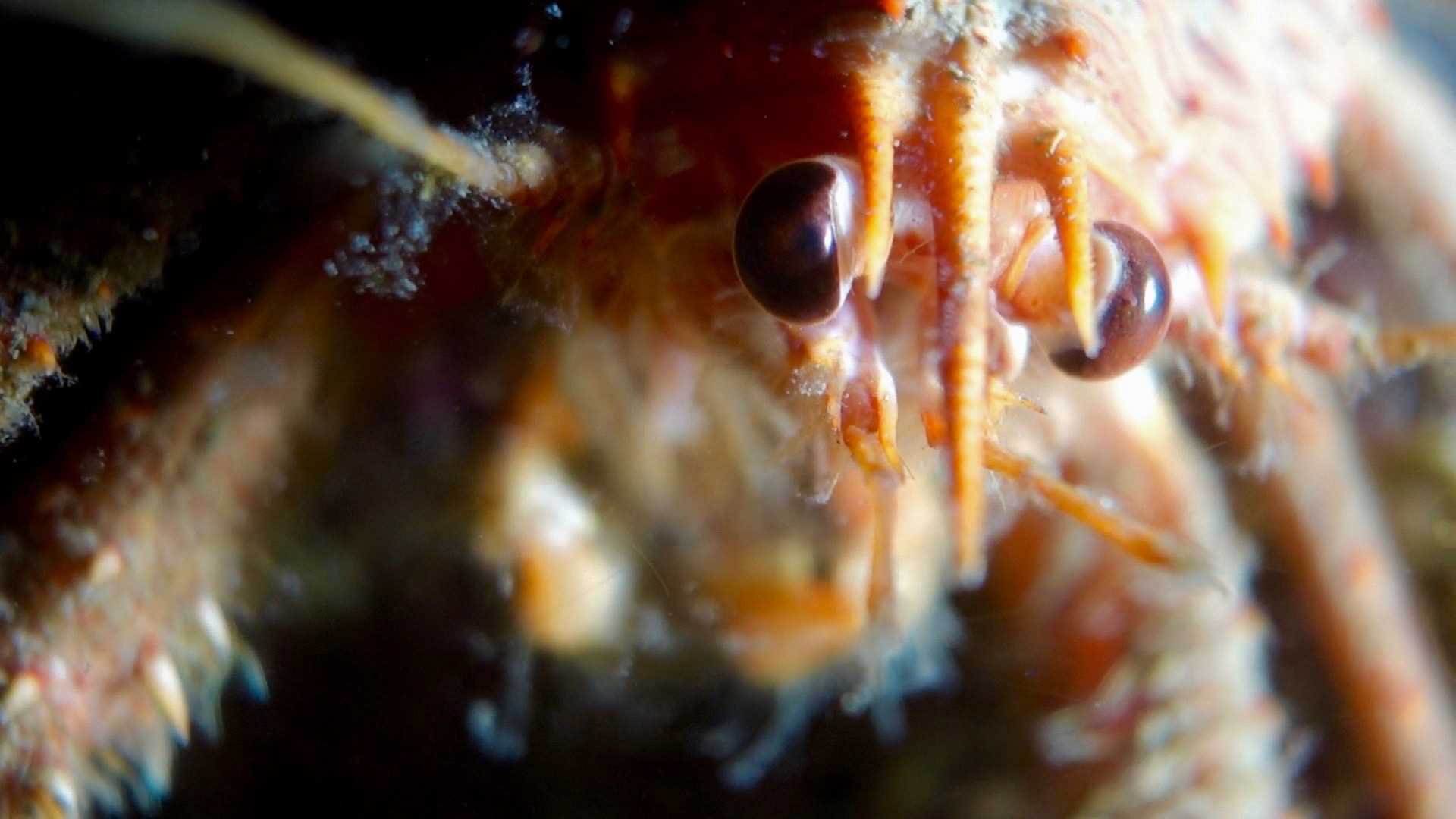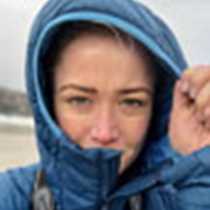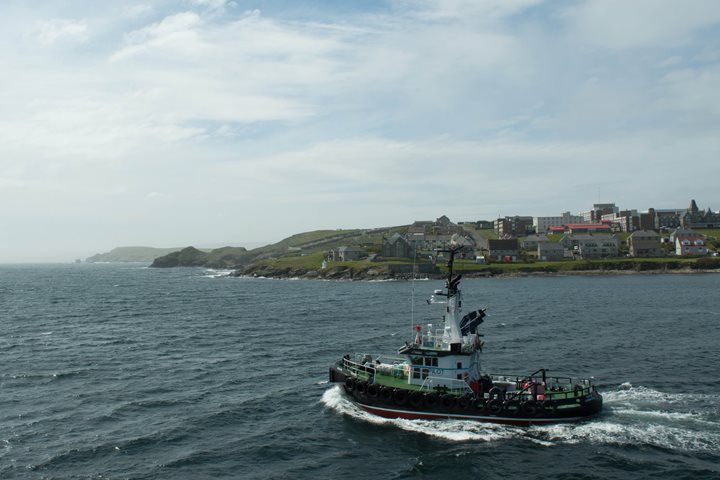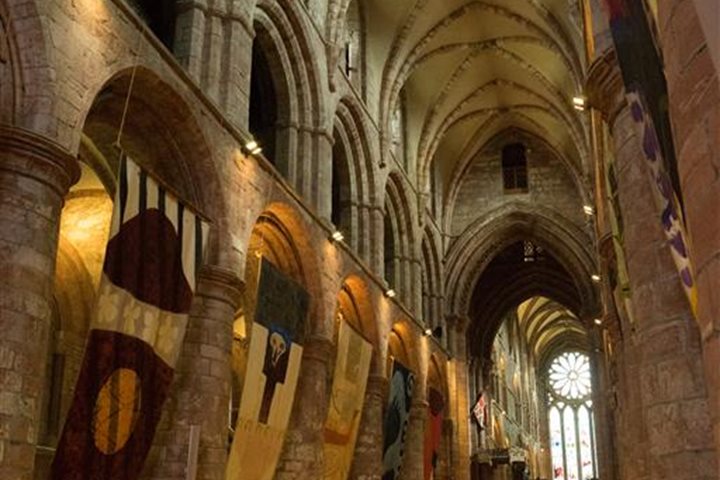“I never knew there was such beauty in these cold waters.” –Lindblad Guest
For the past 13 days we have been sailing around the British and Irish Isles on board the National Geographic Explorer. As our voyage continues, the seas we are sailing across have appeared dark and mysterious. Even during the gloriously sunny days we have been enjoying, the water temperature at this time of year would be enough to dissuade the hardiest amongst us from taking a dip—or even a paddle! To the eye these surface waters appear uninviting, yet they veil a rich and bustling ocean environment. What’s more, the water temperature can be deceiving—what seems to be a cold and inhospitable environment to us is in fact a highly productive marine environment.
Early this morning as the National Geographic Explorer sailed slowly into Stornoway Harbor, on the Isle of Lewis, there were plenty of reminders of the productivity of these Scottish seas. The colorful fishing boats jostled in the harbor and the line of dock buildings included the Stornoway Kipper Smokehouse as well as the Stornoway Sea Angling Club. Those of us who enjoyed a guided walk of the town observed the Crab Truck loading the daily bounty of freshly caught crab ready to transport back to the Scottish mainland and the markets that await. Throughout the day there was a real sense of having arrived in a working fishing town, where the sea and its bounty has been of enormous importance for multiple centuries.
The productive seas around the British and Irish Isles have, in many ways, defined the majority of the places we have visited thus far. From the Herring girls who left the Isle of Lewis in the 19th century in order to earn a little money and experience a life a little different, to the huge Atlantic trawlers moored in Killybegs in Ireland, the sea and its resources have defined local communities both past and present.
It is easy to observe the industry and the bustle surrounding it when you visit these coastal towns and villages today. What is harder, however, is to really appreciate and fathom the reasons for this productive industry, which is all thanks to these prolific yet chilly seas we are sailing through. On the National Geographic Explorer, the Undersea Specialists and Expedition Divers are here to deliver this appreciation and understanding to our guests.
Today as the buses departed Stornoway Harbour pier for a tour of the most significant sites of historical and archaeological interest on the Isle of Lewis, including the ancient Standing Stones of Callanish, the undersea team went in the opposite direction and headed out to sea where they descended into the 10°C (50°F) water to film and discover what these productive oceans hold along their shallow shores.
At this time of year the spring plankton bloom is well underway. Essentially the plant life in the water column is blooming thanks to the increased hours of sunshine and higher temperatures. This might result in green water, but it doesn’t detract from the amount of life in the water. If anything there is often more, as we have witnessed along the coast of Ireland with our magnificent sightings of basking sharks. Today the low water clarity didn’t dissuade the undersea team as they found an abundance of squat lobsters, feather stars, sea anemones, tunicates, and soft corals. Bringing this underwater world up to the surface in the form of video footage and still photos allows everyone on board to appreciate the abundance, colour, and complexity of life under these uninviting waters.
The National Geographic Explorer departed Stornoway this evening, sailing across these cold and captivating waters. For centuries these seas have provided people with a livelihood, a culture and a sense of place. Here on the Isle of Lewis the influence of the ocean, its productivity and its strength is all-enveloping. Catching a glimpse of what lies beneath the water in the form of the undersea footage allows us all a chance to understand and appreciate these seas a little more. Perhaps on a voyage such as this it allows us all a chance to appreciate why these seas have provided so much for these sturdy coastal communities.







